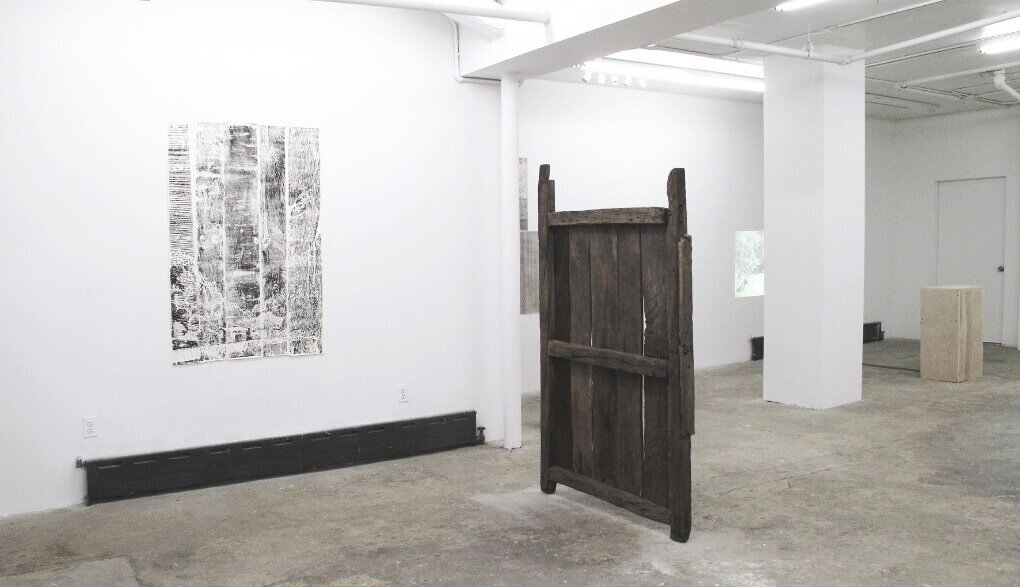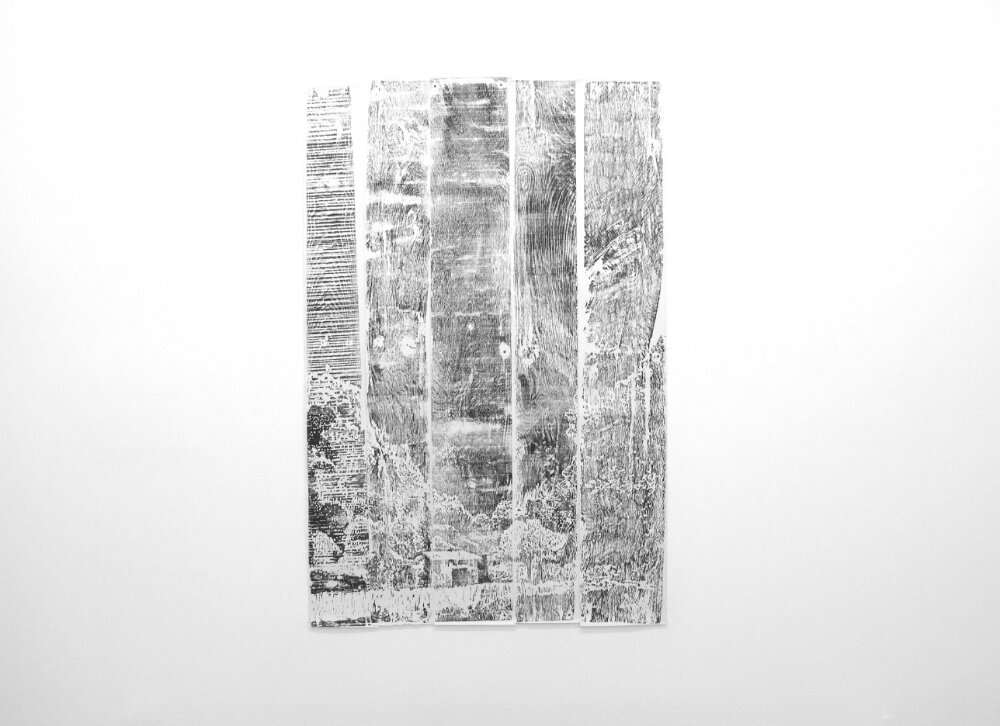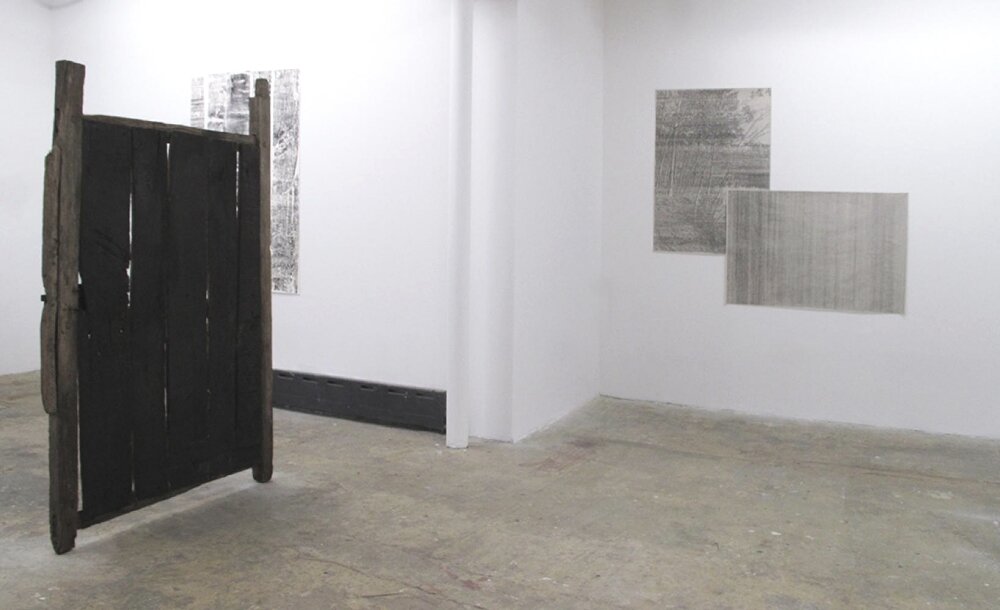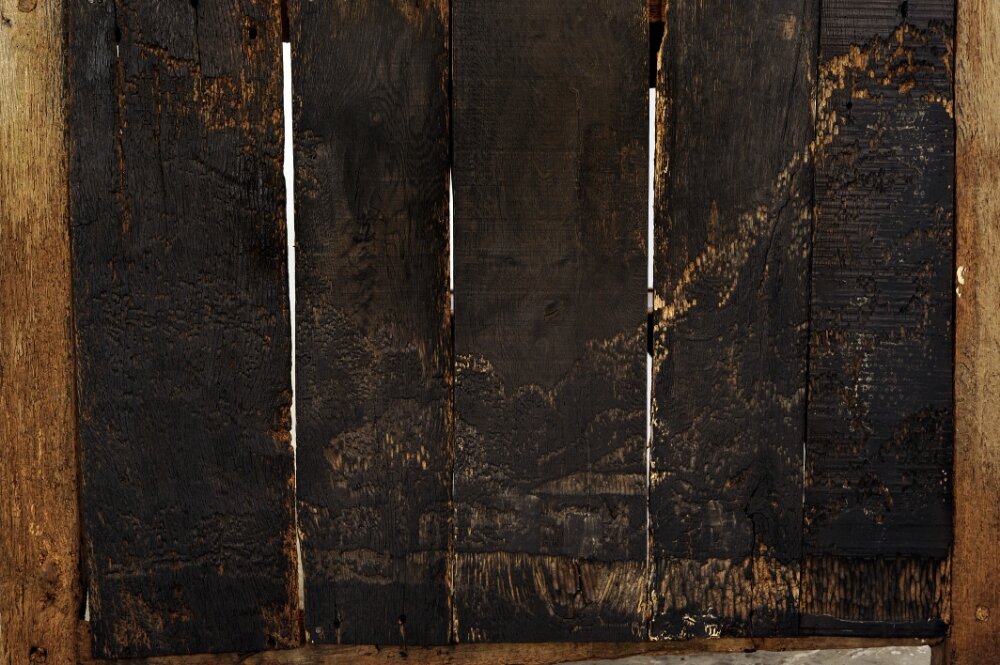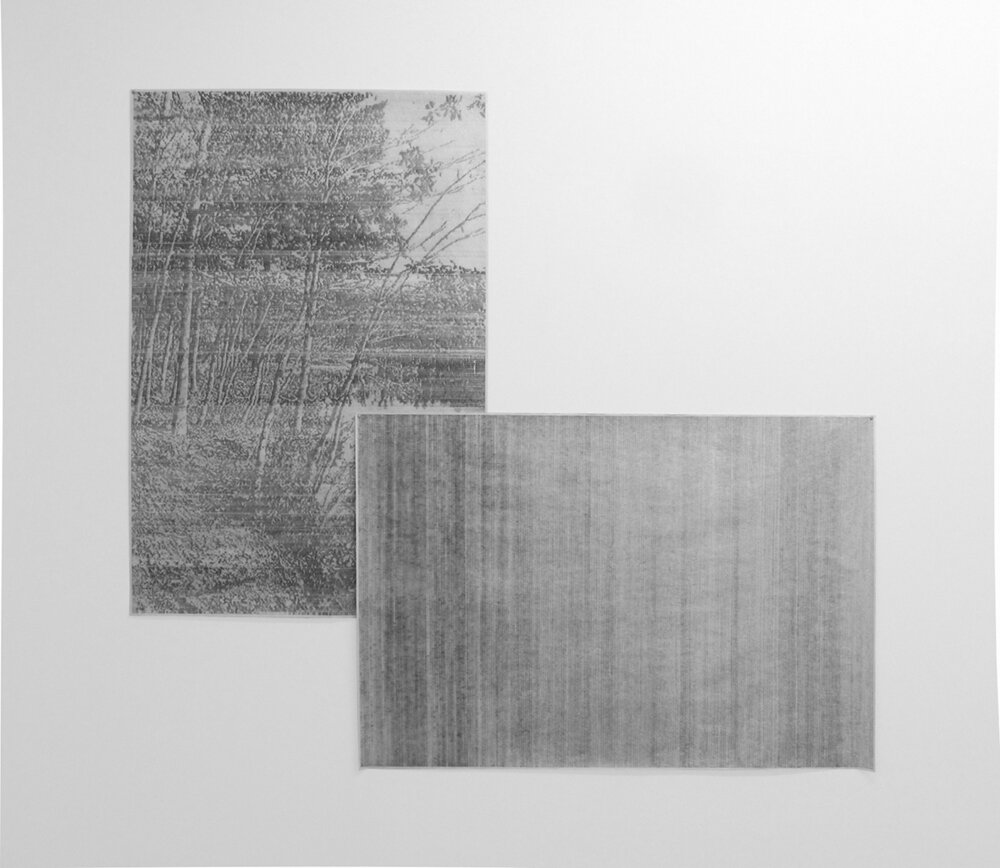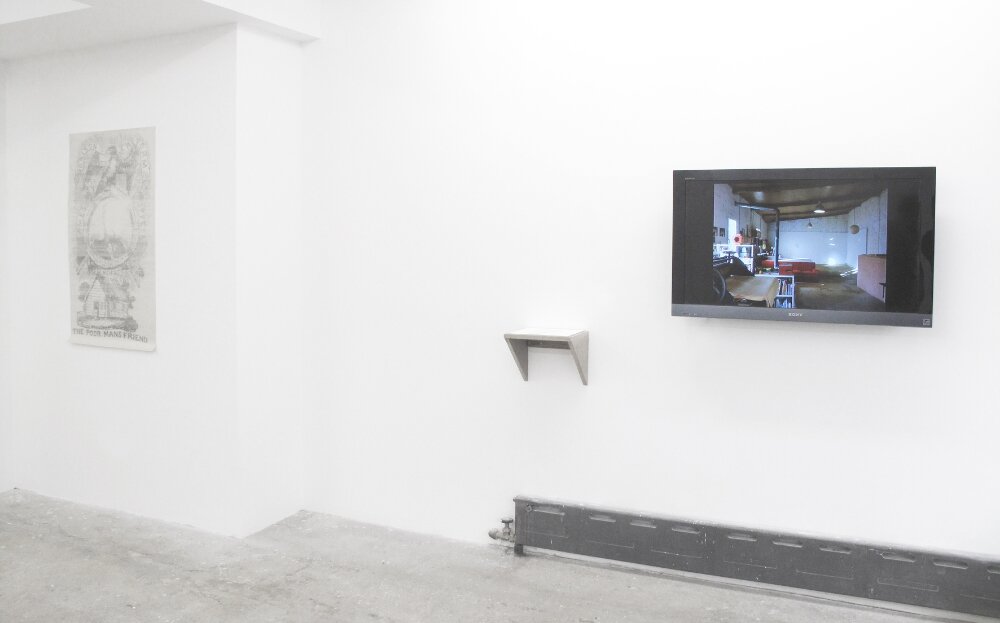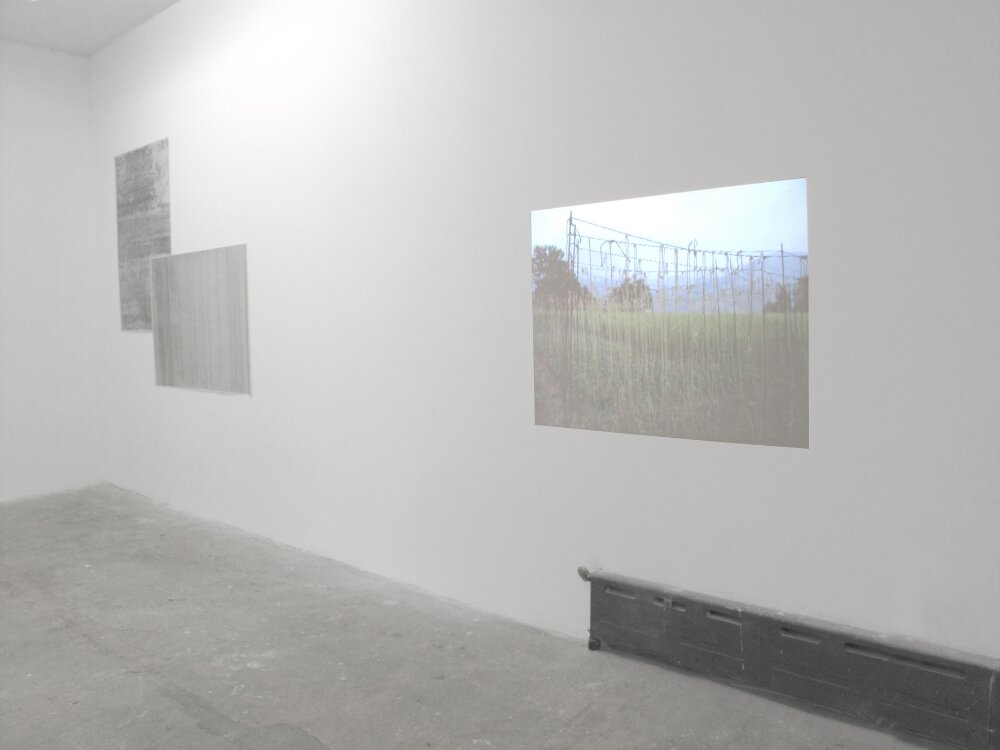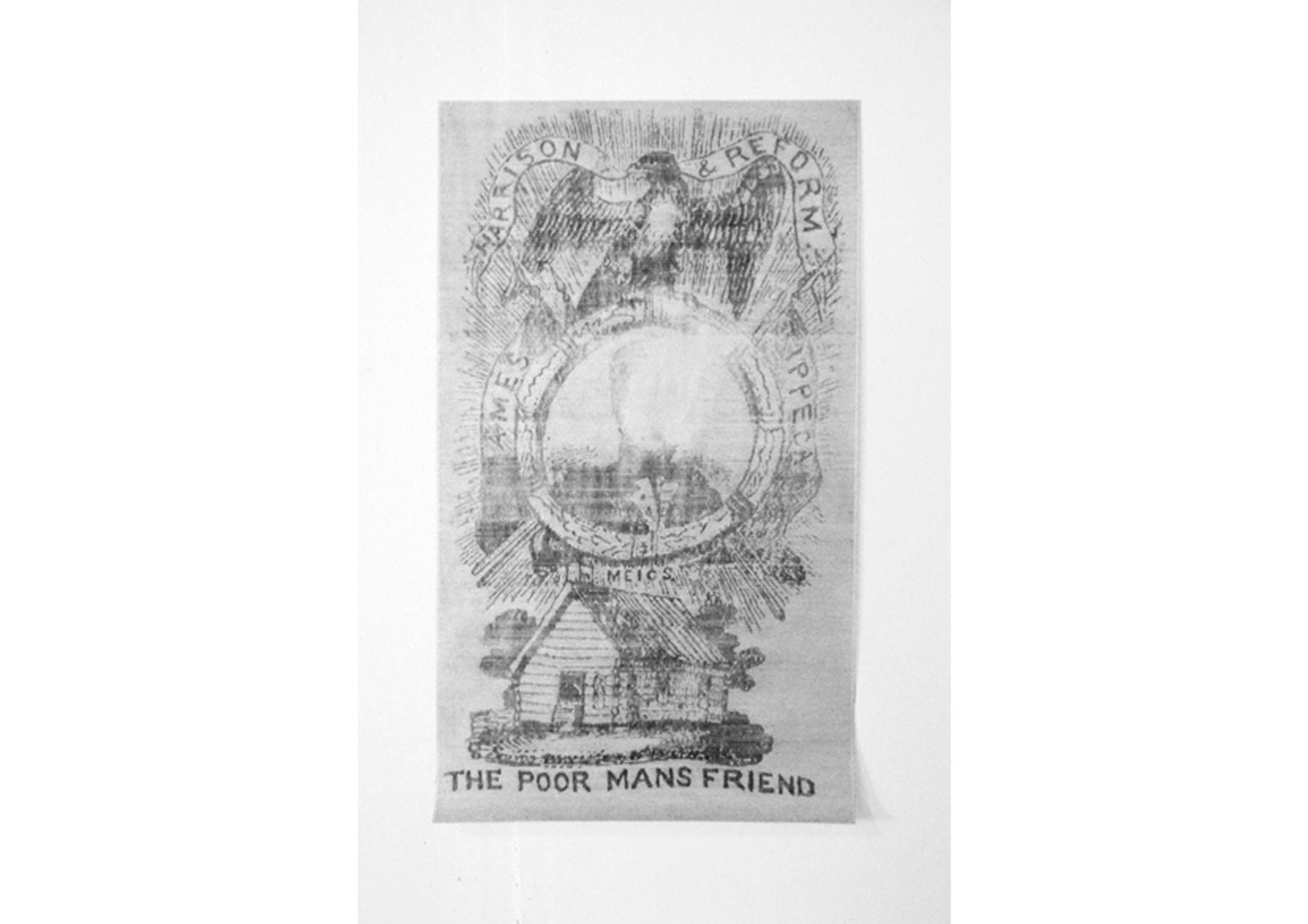Javier Arce: Retry the life experiment in the communal
February 14 – March, 29 2015
The pull towards embracing the natural world is ever present in the work of Javier Arce. The core theme in this body of work is a specific place: his cabin in the woods in the Cantabrian Mountains. Like other agricultural buildings, the structure is very simple, with a rectangular shape and very small rooms, and
built with materials from its surroundings. It is a dwelling in the simplest sense, not to impress but to
provide shelter from the elements and to exist in a constant dialogue with its owner. Like many of the first
dwellings that existed in now overpopulated cities, it continues in its idyllic existence until its tranquilty is
eventually destroyed by the very civilization that was created to advance it.
Featured in this exhibition are two carefully executed drawings on newsprint: Arbol, which depicts the felling of a sequoia tree and Walden Pond depicting a group of trees on the edge of a forest. Both pictures
are partially obscured by an abstract drawing, displayed in a landscape format. The censoring of
information continues in another piece where he utilizes the Unabomer’s manifesto as it was printed in
the New York Times to obscure the daily front page of the actual newspaper itself, an artwork that will
change each day of the exhibition. Kaczynski’s text is wrought with predictions that have been revealed
as reality in the daily newspaper. Arce’s work, although not as extreme in its message, sympathizes with
the idea of cherishing simplicity above the decaying nature of industry.
The use of borrowed text isn’t a new turn for Arce. In his video piece, Doblar la Tierra, pastoral images are coupled with text from Ernst Jünger’s The Forest Passage, primarily a text about the importance of individuality and freedom, concepts that have been in existence longer than religion, politics and reason. When Jünger writes about the fragility of democracy, he reminds us that an election campaign is like a show and as such requires a stage. Arce’s piece The Poor Man’s Friend recreates a poster for the William Henry Harrison election campaign of 1840 depicting the cabin of Harrison’s youth. This campaign presented the candidate as one from humble beginnings, circumventing the problematic issue of slavery and winning him the election. Here the cabin is a symbol of humility, a structure unburdened by the vanity of adornment.
Much of Arce’s work discusses the journey through life and the metaphorical forest that we venture through. In Jünger’s philosophy, the passage through the forest is accessible for anyone willing to make the trek. The cabin, which gives a physical representation to the state of limbo, is featured in the piece which includes Arce’s own cabin door with an engraving of the cabin in its surroundings. The gateway is here for us to decide if we will walk through.

